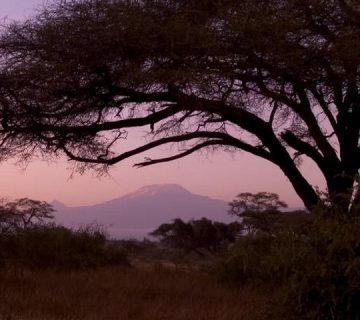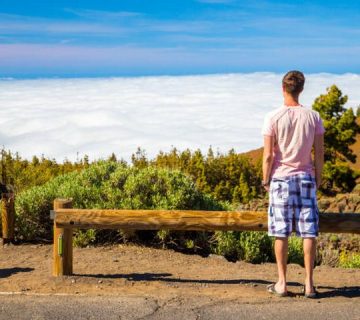Embracing the Majestic: Kilimanjaro Trekking and Sustainable Cultural Tourism
Towering above the African plains, Mount Kilimanjaro is not just a mountain; it is a beacon of adventure, culture, and ecological awareness. At the Kilimanjaro Centre for Trekking and Ecotourism (KCTE), we blend the thrill of the climb with the enriching experience of local culture, all while upholding the principles of sustainability. This blog post takes you on a journey through the heart of Tanzania, where the spirit of Kilimanjaro and the richness of cultural tourism coalesce into an unforgettable adventure.
Why Choose Kilimanjaro for Your Next Adventure?
Mount Kilimanjaro is more than Africa’s highest peak; it’s a world of its own. Each step up its slopes offers a chance to traverse through five distinct ecological zones – from lush rainforests to alpine deserts, each zone teems with unique wildlife and breathtaking landscapes. Trekking Kilimanjaro is not merely a physical challenge; it’s a voyage of personal and environmental discovery.
The Role of Sustainability in Trekking
At KCTE, sustainability is not an option; it’s at the core of every trek. We believe that the beauty of Kilimanjaro should be preserved for generations to come, which is why we implement eco-friendly practices in all our tours. From reducing waste to supporting local conservation initiatives, we ensure that every step you take on the mountain contributes positively to the environment.
Dive into Authentic Cultural Tourism
Kilimanjaro is surrounded by a rich tapestry of tribal cultures, each offering a unique glimpse into the diverse heritage of Tanzania. Engaging with local communities, understanding their traditions, and experiencing their warm hospitality forms the essence of sustainable cultural tourism. At KCTE, we facilitate immersive cultural experiences that respect and celebrate local customs and lifestyles.
Engaging with the Chagga Tribe
Nestled on the slopes of Kilimanjaro, the Chagga tribe is known for its rich agricultural traditions and warm hospitality. Our tours offer you the opportunity to visit Chagga homes, learn about their ingenious farming techniques, and even participate in traditional coffee-making processes. This interaction not only enriches your travel experience but also supports local economies.
Maasai Encounters
The Maasai people, with their distinctive red attire and pastoral lifestyle, are one of Africa’s most iconic tribes. Through KCTE, you can visit Maasai villages, witness their traditional dances, and learn about their symbiotic relationship with the natural environment. These cultural visits help preserve heritage and provide the Maasai with a sustainable income source.
Choosing Your Kilimanjaro Route
Kilimanjaro offers several routes to its summit, each with its own unique attractions:
- Marangu Route: Often called the "Coca-Cola" route, this is the most popular path. It offers sleeping huts and a relatively gentle gradient.
- Machame Route: Known as the "Whiskey" route, this is more challenging but rewards trekkers with stunning scenic vistas.
- Lemosho Route: Ideal for those seeking a quieter path, it starts in lush rainforests and offers high chances of wildlife sightings.
Selecting the right route is crucial to your trekking experience, and at KCTE, we provide expert guidance to match the route with your adventure level and interests.
Best Practices for Responsible Trekking
Responsible trekking ensures that your adventure also respects the mountain and its communities. Here are some tips:
- Leave No Trace: Carry out what you carry in, minimizing waste and environmental impact.
- Respect Wildlife: Maintain a safe distance from wildlife and avoid feeding or disturbing the animals.
- Support Local: Hire local guides, buy local products, and use services that benefit the community economically.
When to Visit
The best times to climb Kilimanjaro are during the dry seasons: January to mid-March and June to October. These months offer the clearest skies and safest trekking conditions. However, visiting during the off-peak season can mean fewer crowds and a more personal connection with the mountain.
Preparing for Your Trek
Physically preparing for Kilimanjaro is essential. Regular hiking, cardiovascular exercises, and altitude training are recommended. Additionally, understanding the symptoms of altitude sickness and knowing how to react is crucial. At KCTE, we provide pre-trek training advice and on-route support to ensure your safety and enjoyment.
FAQ Section
What is the success rate of reaching the summit with KCTE?
Our success rate is over 90%, thanks to our experienced guides and well-structured acclimatization processes.
How do I know which route to choose?
We offer personalized consultations to discuss your experience, fitness level, and preferences to select the ideal route for you.
What should I pack for my Kilimanjaro trek?
Essential items include thermal layers, waterproof clothing, a sleeping bag suitable for low temperatures, sun protection, and a sturdy pair of hiking boots. A detailed packing list will be provided upon booking.
How does KCTE support local communities?
We hire local staff, engage with local businesses for supplies, and actively participate in community-led conservation projects.
Embrace the Adventure with KCTE
Trekking Kilimanjaro and engaging in sustainable cultural tourism are not just trips; they are transformative experiences that connect you deeply with nature and humanity. At Kilimanjaro Centre for Trekking and Ecotourism (KCTE), we are committed to providing you with an adventure that is as responsible as it is thrilling. Book your climb with us today and take the first step towards a journey that will leave footprints on your heart and minimal impact on the earth.
Explore, experience, and conserve with KCTE, where every step counts towards a greater understanding and respect for our world. Join us in the journey of a lifetime – your adventure awaits!




